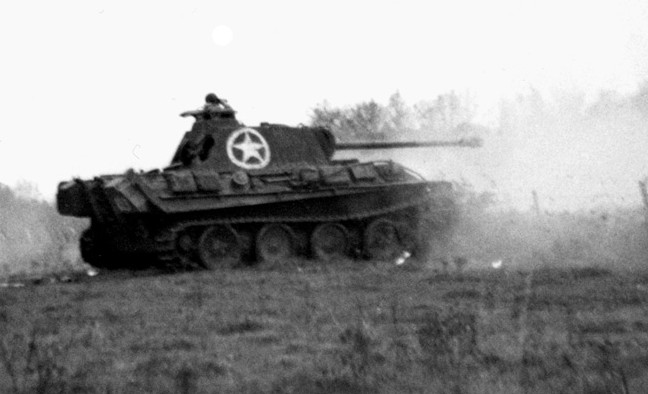

The Great War interrupted his scholastic plans when he was drafted into the German Army in June 1917 as a private and a Fahnenjunker (officer candidate). Born January 14, 1899, in the Bavarian city of Würzburg, Fritz Hermann Michael Bayerlein was one of three children of a lower middle-class family with no prior military tradition.īefore to the start of World War I in August 1914, Fritz had been a student pursuing a career as a teacher of geography and history. Just as Bayerlein held his new command in high regard, the men of Panzer Lehr viewed their leader with great esteem. Regardless, Bayerlein remarked to members of his staff that he would do all in his power to have his unit ready for the coming operation, expressing confidence that his “boys” would perform with determination and courage regardless of the harsh weather conditions, lack of friendly air support, fuel, transport, and weapons that currently plagued his division.īayerlein was right in the high regard he held for his current command it had been created as an elite tank formation to be employed as an armored mobile strike force against the Western Allies when they invaded the shores of France.

Fritz Bayerlein, pictured in North Africa while serving on Rommel’s staff, was the hard-driving commander of the Panzer Lehr Division. Leaving the Führer’s headquarters, he stopped at the city of Würzburg to visit his family, suspecting it would be the last time he would ever see them. With Antwerp, the main entry point for Allied supplies into northwestern Europe, in German hands, Hitler exclaimed, the Americans, English, and French would be forced to make an immediate negotiated peace with the Reich.Īlong with the vast majority of officers at the meeting, Bayerlein seriously doubted the concept and the new German offensive, as well as its ability to achieve any positive military results. A third German army-the Seventh under General der Panzertruppen Erich Brandenberger-was tasked with guarding the southern flank of the German offensive. Warming to his subject, Hitler said that the German Sixth Panzer Army would capture Liege, Belgium, while to its immediate south Manteuffel’s Fifth Panzer Army would take the port city of Antwerp. The Führer explained that he had managed to scrape together everything he could-25 divisions containing 250,000 men and 800 armored fighting vehicles-for the effort, and if it did not succeed, the war would be lost. The Nazi dictator harangued his generals with a two-hour prepared speech, ending with the declaration that in a few days the German Army would launch a massive counterattack in the West. A half-hour bus ride brought the entire group to the field headquarters in the West of, and face-to-face with, their supreme leader: Adolf Hitler. There he found assembled all the German army, corps, and division commanders serving on the Western Front.


The answers to those questions came two days later.ĭecember 12 witnessed a summons for Bayerlein to appear at the Wehrmacht high command’s headquarters in the West located at Ziegenberg. It was apparent to the tank leader that a German offensive in the West was in the offing, but where and when it would take place he did not know. Bayerlein, commanding the Panzer Lehr Division, was specifically asked if he could take the Belgian crossroads town of Bastogne, to which he replied that unless the place could be captured by surprise “otherwise only a heavily prepared attack could take it.” Army during World War II) Fritz Bayerlein was called to a meeting at Kyllburg (Eifel) to participate in a map exercise involving an advance to the Meuse River.Īmong the German Army officers present was General der Panzertruppen (i.e., lieutenant general) Hasso von Manteuffel, commander of the Fifth Panzer Army, and several tank corps leaders. On December 10, 1944, Generalleutnant (equivalent to major general in the U.S.


 0 kommentar(er)
0 kommentar(er)
